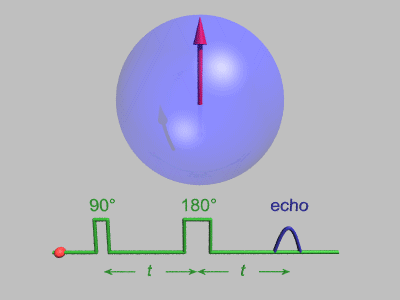|
Neutron-acceptance Diagram Shading
{{Unreferenced, date=June 2019, bot=noref (GreenC bot) Neutron-acceptance diagram shading (NADS) is a beam simulation technique. Unlike Monte-Carlo simulation codes like McStas, NADS does not trace individual neutrons but traces linearly-related bunches in a reduced-dimensionality phase space. Bunches are subdivided where necessary to follow accurately a simplified surface reflectivity model. This makes jnads results equivalent to Monte-Carlo simulations but about 5 orders of magnitude faster for difficult modelling tasks. Speed The raw speed of NADS makes it a particularly attractive tool for beam modelling where evolutionary algorithms are used. Tests on the C++ prototype engine could calculate the on-sample flux of a SANS instrument in 55 milliseconds on a single 2 GHz intel core 2 core. The java release (jnads) performs the same calculation in 0.8 seconds on the same hardware. A Monte-Carlo simulation of the same instrument would take 25 hours to complete with 1% stat ... [...More Info...] [...Related Items...] OR: [Wikipedia] [Google] [Baidu] |
Monte Carlo Method
Monte Carlo methods, or Monte Carlo experiments, are a broad class of computational algorithms that rely on repeated random sampling to obtain numerical results. The underlying concept is to use randomness to solve problems that might be deterministic in principle. They are often used in physical and mathematical problems and are most useful when it is difficult or impossible to use other approaches. Monte Carlo methods are mainly used in three problem classes: optimization, numerical integration, and generating draws from a probability distribution. In physics-related problems, Monte Carlo methods are useful for simulating systems with many coupled degrees of freedom, such as fluids, disordered materials, strongly coupled solids, and cellular structures (see cellular Potts model, interacting particle systems, McKean–Vlasov processes, kinetic models of gases). Other examples include modeling phenomena with significant uncertainty in inputs such as the calculation of ... [...More Info...] [...Related Items...] OR: [Wikipedia] [Google] [Baidu] |
McStas
McStasWillendrup, P.; Farhi E.; Knudsen E.; Filges U.; Lefmann K; McStas: past, present and future. Journal of Neutron Research 17, 2014 pp. 35-43 is free and open-source (GNU General Public License) software simulator for neutron scattering experiments. McStas is an abbreviation for Monte carlo Simulation of triple axis spectrometers, but the software can be used to simulate all types of neutron scattering instruments. The software is based on both Monte Carlo methods and ray tracing. A special compiler translates a domain-specific language describing the neutron instrument geometry and component definitions (written in C) to a stand-alone C code. The basics of McStas was written in 1997 at Risø for simulation of their neutron experiments, that were based at the DR3 reactor that was shut down in year 2000. After the fusion of Risø with the Technical University of Denmark, McStas is currently developed at the Physics department of DTU and Institut Laue-Langevin, wit ... [...More Info...] [...Related Items...] OR: [Wikipedia] [Google] [Baidu] |
Small-angle Neutron Scattering
Small-angle neutron scattering (SANS) is an experimental technique that uses elastic neutron scattering at small scattering angles to investigate the structure of various substances at a mesoscopic scale of about 1–100 nm. Small angle neutron scattering is in many respects very similar to small-angle X-ray scattering (SAXS); both techniques are jointly referred to as small-angle scattering (SAS). Advantages of SANS over SAXS are its sensitivity to light elements, the possibility of isotope labelling, and the strong scattering by magnetic moments. Technique During a SANS experiment a beam of neutrons is directed at a sample, which can be an aqueous solution, a solid, a powder, or a crystal. The neutrons are elastically scattered by nuclear interaction with the nuclei or interaction with magnetic momentum of unpaired electrons. In X-ray scattering, photons interact with the electronic cloud so the bigger the element, the bigger the effect is. In neutron scattering, neutr ... [...More Info...] [...Related Items...] OR: [Wikipedia] [Google] [Baidu] |
Neutron Spin Echo
Neutron spin echo spectroscopy is an inelastic neutron scattering technique invented by Ferenc Mezei in the 1970s, and developed in collaboration with John Hayter. In recognition of his work and in other areas, Mezei was awarded the first Walter Haelg Prize in 1999. In magnetic resonance, a spin echo is the refocusing of spin magnetisation by a pulse of resonant electromagnetic radiation. The spin echo spectrometer possesses an extremely high energy resolution (roughly one part in 100,000). Additionally, it measures the density-density correlation (or intermediate scattering function) F(Q,t) as a function of momentum transfer Q and time. Other neutron scattering techniques measure the dynamic structure factor S(Q,ω), which can be converted to F(Q,t) by a Fourier transform, which may be difficult in practice. For weak inelastic features S(Q,ω) is better suited, however, for (slow) relaxations the natural representation is given by F(Q,t). Because of its extraord ... [...More Info...] [...Related Items...] OR: [Wikipedia] [Google] [Baidu] |
Institut Laue-Langevin
An institute is an organisational body created for a certain purpose. They are often research organisations (research institutes) created to do research on specific topics, or can also be a professional body. In some countries, institutes can be part of a university or other institutions of higher education, either as a group of departments or an autonomous educational institution without a traditional university status such as a "university institute" (see Institute of Technology). In some countries, such as South Korea and India, private schools are sometimes referred to as institutes, and in Spain, secondary schools are referred to as institutes. Historically, in some countries institutes were educational units imparting vocational training and often incorporating libraries, also known as mechanics' institutes. The word "institute" comes from a Latin word ''institutum'' meaning "facility" or "habit"; from ''instituere'' meaning "build", "create", "raise" or "educate". U ... [...More Info...] [...Related Items...] OR: [Wikipedia] [Google] [Baidu] |


